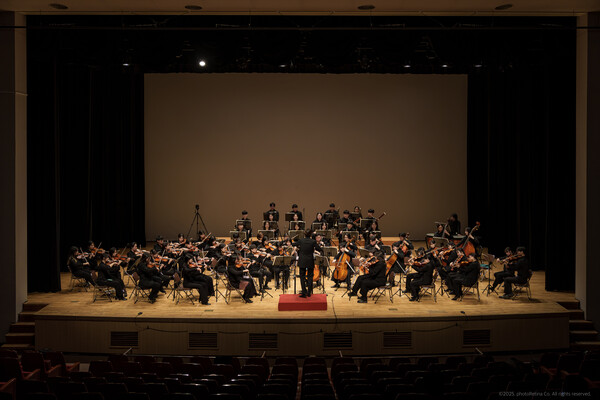
Classical music has long belonged to the realms of culture and tradition. It was once widely seen as complex and unfamiliar or as a formal and authoritative culture, making it seem distant from the general public. In recent years, however, noticeable changes have emerged both domestically and internationally, particularly with increasing participation from people in their twenties and thirties. Major concert halls such as the Seoul Arts Center and Sejong Center now attract not only middle-aged and older audiences but also university students and young professionals. This trend is driven by a combination of digital platforms, innovative concert planning, and evolving consumption patterns, allowing classical music to reestablish itself as accessible and open.
Changes in concert hall atmosphere and audience composition
The atmosphere in concert halls today is markedly different from the past. According to data from the Integrated Performing Arts Information System, domestic classical performances increased from 6,920 in 2022 to 8,109 in 2023, a growth of 17.2%, while revenue rose from 67.8 billion won to 101 billion won, an increase of approximately 49%. Significant changes are particularly evident in seat occupancy rates and the age distribution of audiences. For instance, at pianist Cho Seong-jin’s recital held at the Seoul Arts Center, more than half of the online ticket buyers were in their twenties or thirties, and certain performances sold out immediately upon ticket release. Whereas concert halls were once dominated by middle-aged and older audiences, young spectators, including university students, early- career professionals, and newlyweds, are now steadily attending performances.
Moreover, the participation style of young audiences resembles that of idol fandom culture or the “revolving door audience.” They repeatedly attend performances of their favorite musicians, share fan-taken photos and videos from concerts on social media, and collect program books, integrating fan culture into classical music. Outside the concert hall, active communication with performers and participation in clubs and societies reflect how classical music is shifting from a mere spectator activity into a participatory cultural experience.
New consumption patterns driven by digital media and social networks
Young people’s experiences of classical music are no longer limited to offline concert halls. Digital platforms and social media have become major arenas for consuming classical music. A representative example is a YouTube channel with approximately 270,000 subscribers that makes classical music accessible to both beginners and enthusiasts. The channel provides not only live performance footage, but also entertaining explanations of composers, the stories behind their works, musical terminology, and common misconceptions, sparking curiosity among young viewers. Another channel, with over 110,000 subscribers, introduces classical repertoire such as Tchaikovsky symphonies or Beethoven sonatas, in an easy-to-understand manner. The presence of classical music on TikTok and Instagram is also increasing. Short videos featuring pieces like Vivaldi’s The Four Seasons or Chopin’s Grand Waltz are repeatedly used as background music, creating viral effects. Classical music has thus naturally infiltrated short-form content, which was once dominated almost exclusively by K-pop.
This digital consumption satisfies the diverse needs of the young generation, serving not only emotional comfort but also self-improvement, relaxation, and entertainment. Recently, neologisms such as “classic-hip” have emerged, reflecting a trend where enjoying classical music is perceived as a sophisticated, trendy lifestyle. Classical music is no longer viewed as “serious and heavy” but has become a part of everyday culture that can even be enjoyed in short, simple video formats.
Lowering barriers to entry in the classical music world
Changes within the classical music scene itself have accelerated young audience participation. The Sejong Center for the Performing Arts operates the “Classical for Everyone” series, allowing attendees to choose their own ticket price. This reduces the financial barrier, enabling students and young professionals to experience classical music without a burden. Additionally, the outdoor opera at Gwanghwamun Square, jointly hosted by Sejong Center and the Seoul Metropolitan Government, was free to the public, attracting thousands of citizens to experience classical music. Regional concert halls are also experimenting with innovative approaches. The “PAPA X Suseong Artpia Planning Series” in Daegu, for example, transforms a concert hall in Suseong into a brand-like showroom, allowing attendees to experience both the performance and the space. By combining classical performances with fashion, design, and lifestyle, these initiatives create a new type of curated concert that departs from traditional forms. These changes demonstrate that classical music is no longer exclusive to a particular social class, professions, or an age group. By lowering barriers in price, format, and space, classical music is increasingly integrated into everyday life.
The recent increase in classical music consumption among young people is not merely a trend or a temporary phenomenon. Changes in audiences, digital platforms, and concert innovations have ushered classical music into a new era. Young audiences see classical music as emotional comfort, self-expression, and a form of social interaction, not just cultural refinement. In this process, various factors such as fandom culture, social media dissemination, and low-cost or free performances create layered motivations. With low barriers and innovative programming, classical music can transcend its past image as an authoritative art form and establish itself as a living, contemporary music culture embraced by young generations.

